Resident Threatens Lawsuit Against MaineDOT Over Seawall Road
"It's not just a road. It's a way of life."
SOUTHWEST HARBOR—One local business owner told the Deputy Commissioner of MaineDOT on Thursday night that if the agency doesn’t fix the storm-broken, state-owned Seawall Road soon, that they need to be prepared for a class action suit that she’d lead herself.
Charlotte Gill, Seawall Motel and Charlotte’s Legendary Lobster Pound owner, told a crowd of approximately 200 at the Pemetic School Elementary School about the road’s importance to the community, “This is not just a roadway. It’s a way of life.”
Gill said that the state has shut down people’s access to a tourist attraction, which is the oceanside road that people often park by, stare at, walk or bike along. People are not only avoiding Seawall, she said, but the towns of Southwest Harbor and Tremont. That is impacting local businesses who have short seasons. Her own business was down 60% compared to last season.
The affected businesses, one local man said, are starving.
It’s not just about the businesses. The nearby heath is a unique ecosystem and the road helps protect that. Many attending expressed their worries about the heath’s health. It’s not just about the environment or climate change, either.
“We need access to emergency services. We need home care,” one woman said.
The people attending the DOT-run public meeting ended up providing testimony, one after the other, about why the Seawall Road needed to stay. And for those speaking, it seemed a no brainer.
“Any road that we have? There’s a good reason,” it’s there, one woman said of the roads on Mount Desert Island.
The need for a functional Seawall Road, many said, is not in the future; it is now.
If this same situation was happening in Bar Harbor, they wondered, would the road be fixed already?
The situation is that a state road runs through federal property. This is also true for the Eagle Lake Road in Bar Harbor. The Seawall Road links Southwest Harbor to the Bass Harbor Head lighthouse, popular trails (Wonderland and Ship Harbor), and Acadia National Park’s Seawall campground and picnic area and it was severely damaged from winter storms. To work on the road, the MaineDOT had to receive permission from the park.
The first storm was January 10, and the MaineDOT cleared the debris. A second storm on January 13 caused additional storm damage. Debris was cleared again. On February 14, the National Park Service gave the DOT a permit to do work in the area and the road reopened. On March 10, a storm caused major damage. The road closed again and stayed closed. The water main was eventually back in service on April 30.
To get to those areas now, people have to detour through Tremont, which can sometimes take 25 minutes or more. Now, that detour route to Tremont is undergoing another DOT project, which started this week.
Residents expressed their multiple frustrations that no permanent or temporary fixes have been made and that the road has been unusable since March.
A former Southwest Harbor Select Board member told the crowd that the board hadn’t even heard from the MaineDOT until May. The park said it met with NPS and town managers on April 22. It reached out to local businesses in May and met again with the town managers and NPS on June 5 and June 18.
“I can’t believe the state has let us down to this level,” said Luke Damon.
The MaineDOT explained that there is a process to its decisions and part of that process was holding a public hearing. This hearing was a part of that process. Adding to the state’s difficulties is finding funds for the project.
“The state is very infrastructure rich and population poor,” said MaineDOT Deputy Commissioner Dale Doughty to those attending the meeting that he said was meant to gather public input about the options for the road’s future.
When asked about local residents’ offer to fix the road temporarily, Doughty said he hasn’t heard the offer.
“If that’s a viable offer,” he said. “I’d be happy to talk to them, to the selectman, the (National) Park Service.”
“Things are changing. Was last winter a fluke, I don’t know,” Doughty said about the destruction.
Doughty also laid out some general possibilities for the road.
Those options are basically for the state to fix it or for the state to abandon the road, which would return it to the town. A permanent fix, he said, would likely cost between $900,000 and a million dollars, and likely, closer to a million.
In a presentation slide, Doughty wrote, “Temporary repair work will not last and funds used for them will be lost. Currently, this cost would be fully borne by the state with the possibility of some funds to be reimbursed by FEMA. Not all roads can be immediately repaired if there are reasonable detour options.”
Laura Sullivan, who lives off the Seal Cove Road, said, “Abandoning the pass through is just not even acceptable.”
“Four generations of my family have used that road, relied on that road, enjoyed that road,” Sullivan said. “That road connects two communities together.”
Those communities rely on and need that connection.
“When the going gets rough, we support one another. I think that's huge,” Sullivan said.
She doesn’t want to lose that.
But that’s the potential from other primary option, which would be to remove the road and possibly dead-end Route 102 on either end.
If the road is abandoned by DOT, Doughty said, then it would revert back to Southwest Harbor. If the town also abandoned it, the road would go back to private property owners and Acadia National Park. This would cost approximately $75,000. It would have less of an environmental impact, he said.
Doughty discussed traffic counts and potential negative environmental impacts if the road was to be raised. He said if they used state funds, they could probably move “pretty quickly.” This is not true if they use federal funds. That total review time would be between 3-12 months for federal fund approval.
On one slide, it states that “MaineDOT has decided not to proceed with fully raising the roadway. If the road is rebuilt, MaineDOT feels that the Option 1 build option is the most prudent.”
Option 1 would include placing Gabion baskets along the ocean side, replacing missing pavement, and overlaying the roadway. The edge of the new pavement would be slightly extended to help reduce the asphalt lifting in storms. The cons of this are high costs, Dougty said, and the road would remain vulnerable. Others suggested not using asphalt for the overlay but something meant to be more temporary and easily replaced when damaged by storm surge.
“We’re talking about a million dollars,” said Caroline Cunningham. Another storm taking out one of the few main entries and that side of the island will be cut it off, she said. “I would personally lobby in Washington to get you a million dollars.”
After tonight, Doughty said, they’d gather the feedback and tell his commissioner their recommendation.
“We’re going to make a recommendation and make it fairly quickly,” Doughty said.
EMERGENCY WORRIES
One woman told the crowd that while she was at Wonderland this week, a woman who was there with her grandchildren hit her head and gashed it. She had some confusion. There was blood rushing down her face. It took the ambulance service 45 minutes to arrive, she said.
“They were spectacular,” she said. “They all carried her out in a litter.”
Her grandchildren went to the trailhead. Just six and seven years old, they were distraught watching their grandmother get carried out. Those 45 minutes, she said, were excruciating for those children, for that family.
“I thought that the wait was traumatic. I can’t even imagine having a family member have a heart attack,” and having to wait that long, she said.
Others had similar worries, saying that just five minutes can make a huge difference in saving someone’s life if they are having a heart attack or similar extreme medical event.
David Bachelor, though not speaking for the ambulance service is on its board. He said, “Our response is slower depending on the area you live.”
“What can we do in a week or two to get it to be passed through for emergency services?” one man asked. A wait of at least five extra minutes was unacceptable. “That in a heart attack situation is fatal.”
The worst case scenario is not getting to the area at all since ambulances for Tremont are dispatched through Southwest Harbor, where they are stationed.
Like many, Jason Joyce, of Swan’s Island, advocated for a temporary fix.
“The businesses and first responders need a fix as soon as possible,” Joyce said. “Everybody wants to have that (road) there.”
Tremont Fire Chief and Emergency Services Director Keith Higgins stressed, “We don’t want people going home tonight afraid that we can’t get to you.”
If there was a mass evacuation or a need is there, they would make their best effort, remove barricades, and get people to safety, Higgins said. Citizens who are not emergency responders should not move those barricades themselves.
Traffic data collected in July 2023, factored to June 2024 showed a decrease of 51% to the Southwest Harbor Campground to 942 cars; decrease of 42% to Hadlock Lane to 1752 vehicles; and an increase of 19% to the Tremont Bass Harbor Campground with a total of 1569 vehicles.
STATEWIDE CONTEXT
According to Doughty, “the growing impacts of the more severe and frequent weather caused by climate change are requiring MaineDOT to make tough choices across the state.”
Storms have closed roads, caused infrastructure failures, and created millions in damages on a consistent basis. The sea level rise that is predicted, he said, threatens bridges and roads all along the Maine coast. Culverts in the state have “a greater than 66% chance of overtopping within the next 30 years.”
The state, he said, “when prudent and funding is available” builds more resilient infrastructure. Other times, the state pulls back.
Those attending worried about that pulling back, but also about the road’s continued closure and its impacts on businesses, homes, and the way of life in the area. Larry Reynolds stressed that people can’t sell their wood; they can’t sell their pies and cookies. The money they make now helps them pay taxes to stay in their homes.
Reynolds suggested putting in a temporary one-way with lights at both ends for now.
“Seawall is special to everyone here,” he said to applause. “I love Seawall.”
TO GIVE INPUT TO THE MAINEDOT
Contact: Jarod Farn-Guillette
jarod.farn-guillette@maine.gov
(207) 215-9558
TO SIGN GILL’S PETITION
Gill, has begun a “Save Seawall” petition, which has gathered approximately 955 signatures since the petition began June 3. This petition asks for the road to be reopened.
LINKS TO LEARN MORE
The presentation will be available to both towns and Acadia National according to Doughty. We’ll add that link when we see it up.
If you’d like to donate to help support us, you can, but no pressure! Just click here.


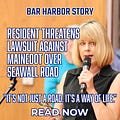


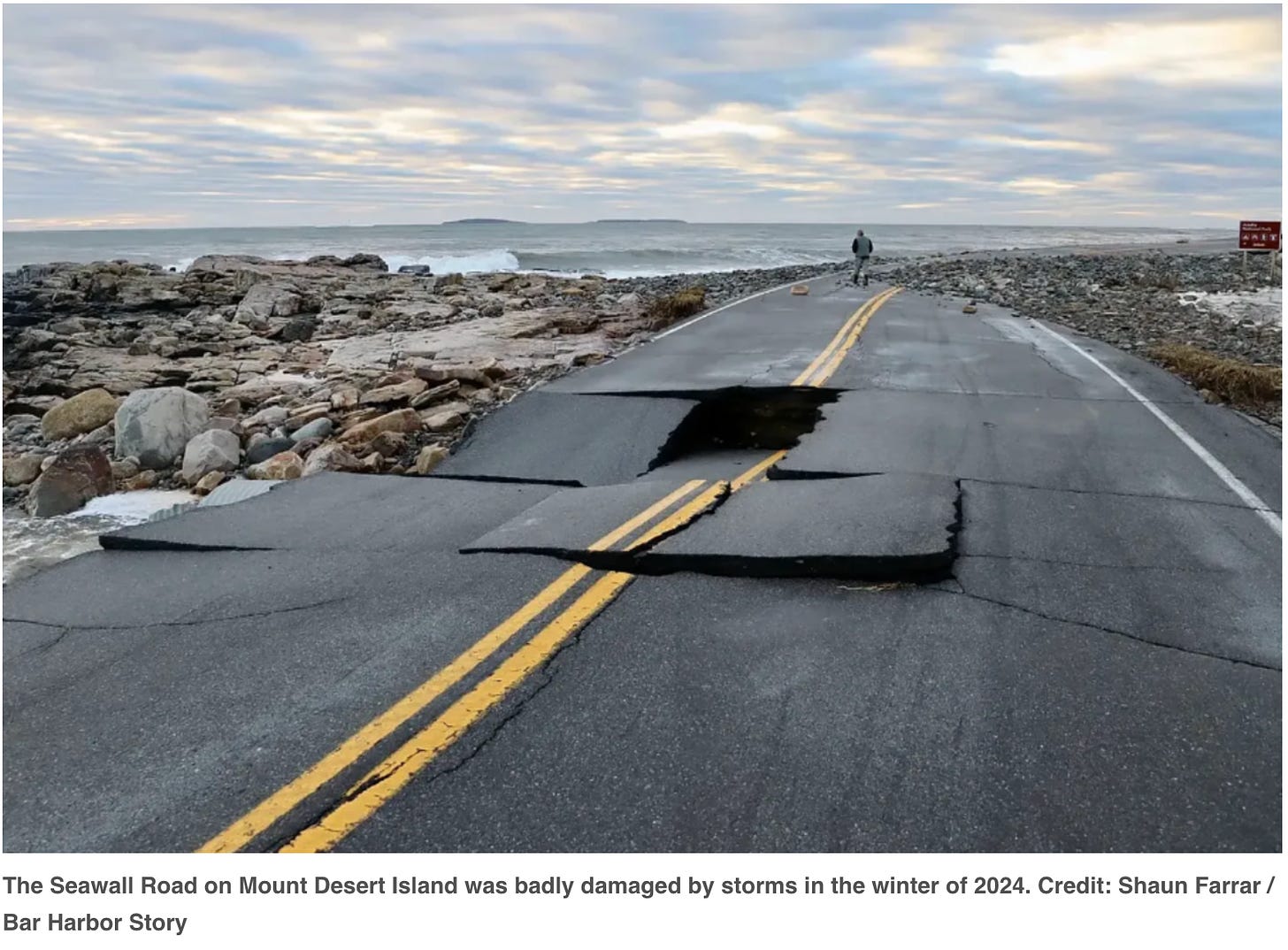


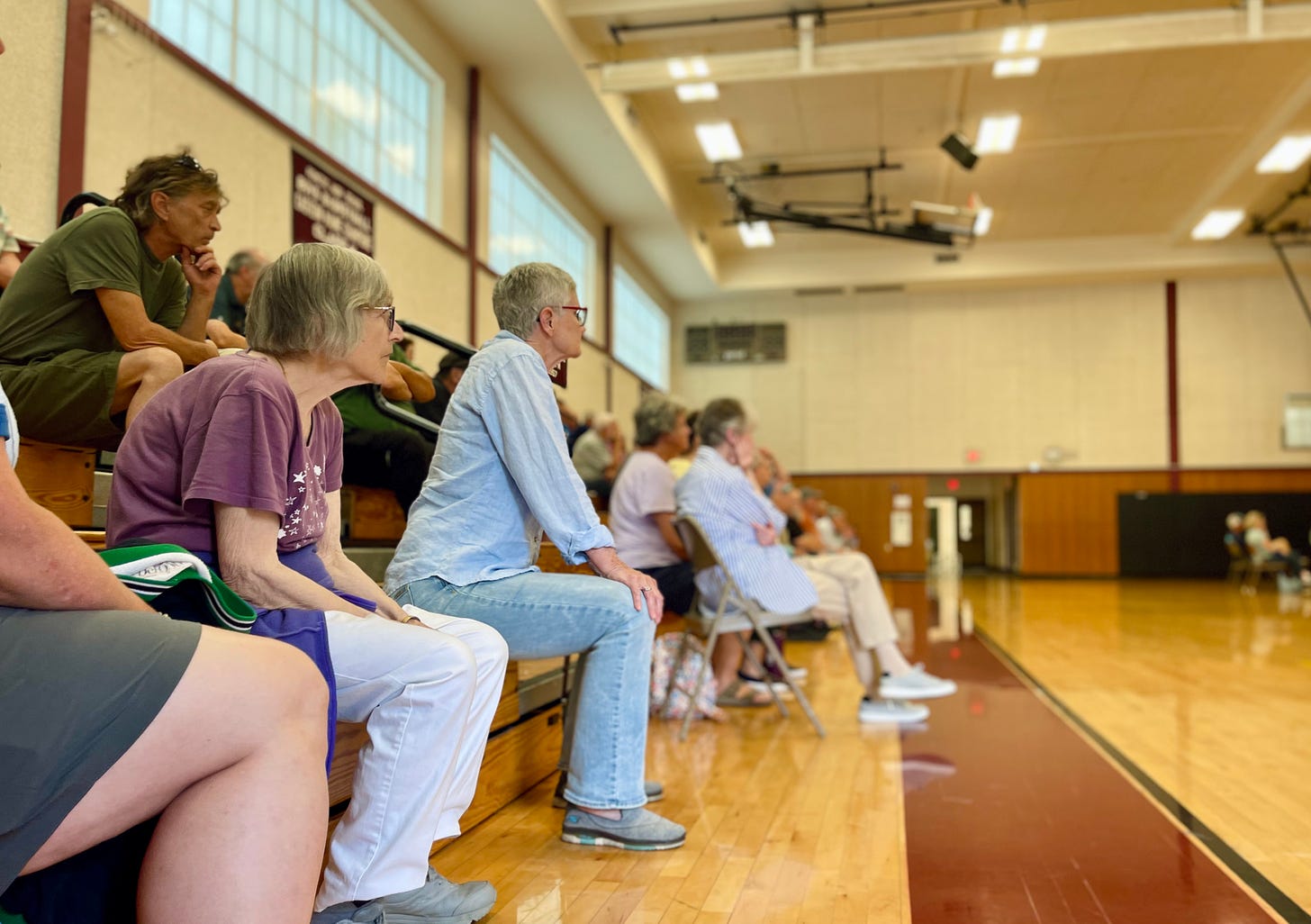

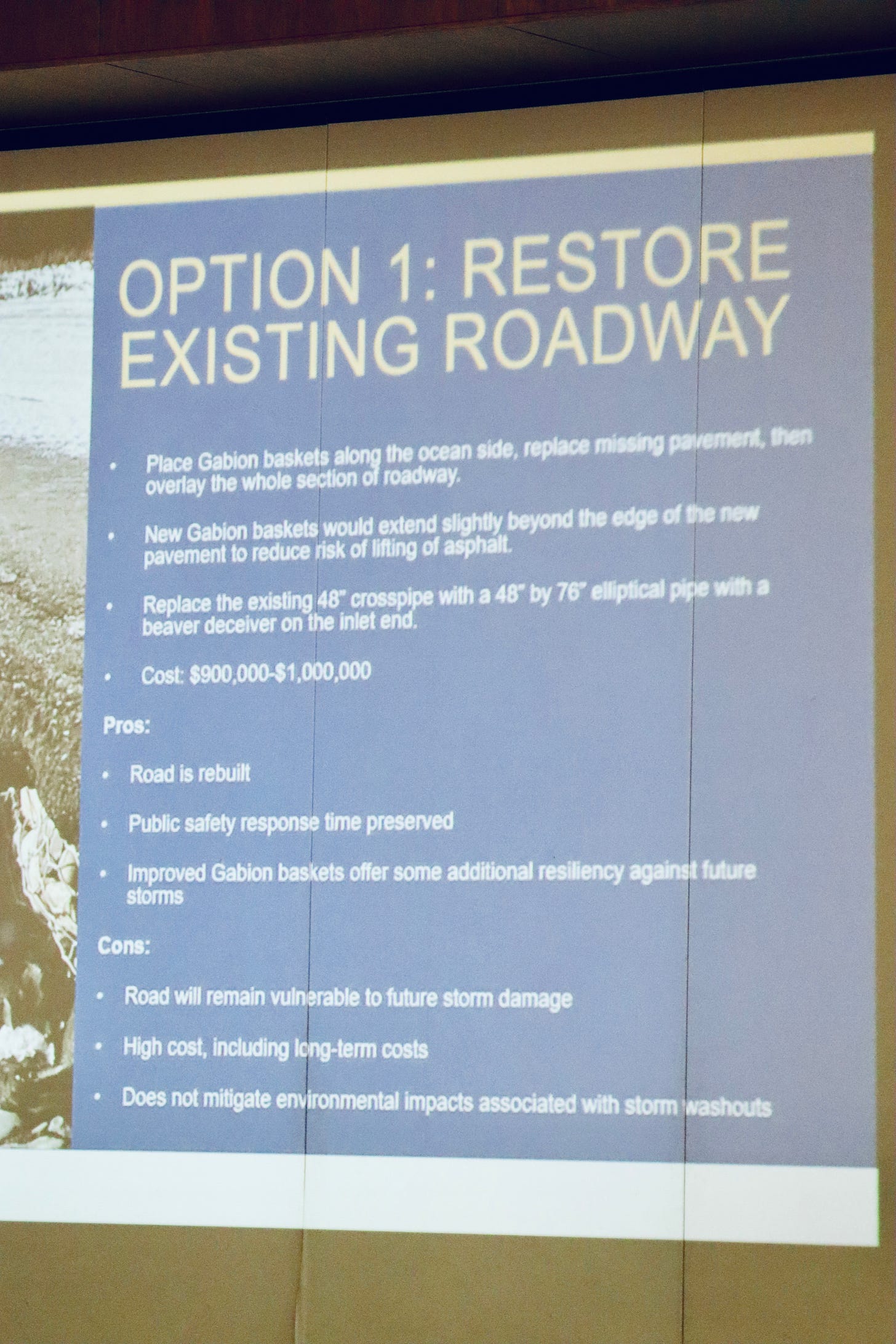
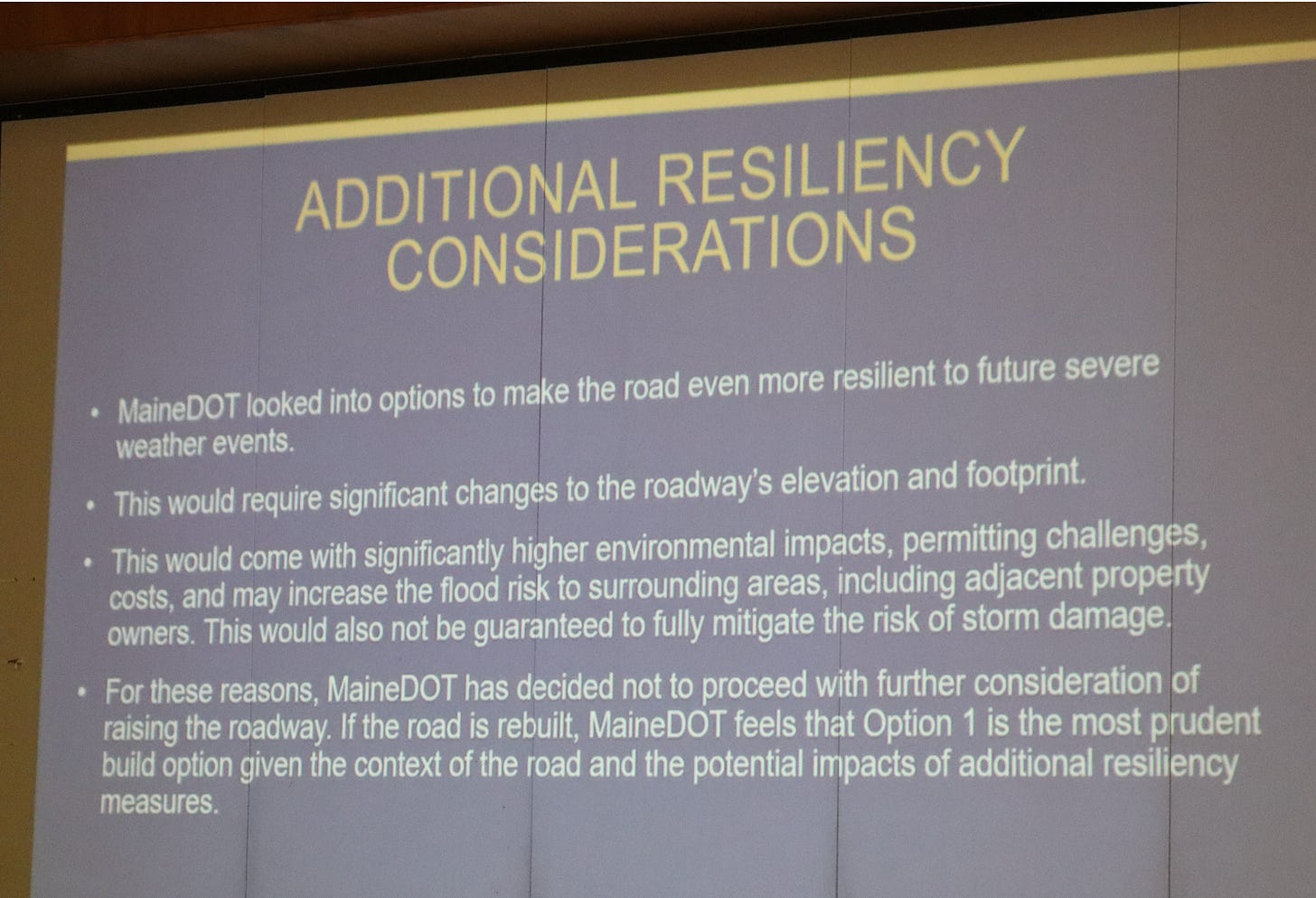
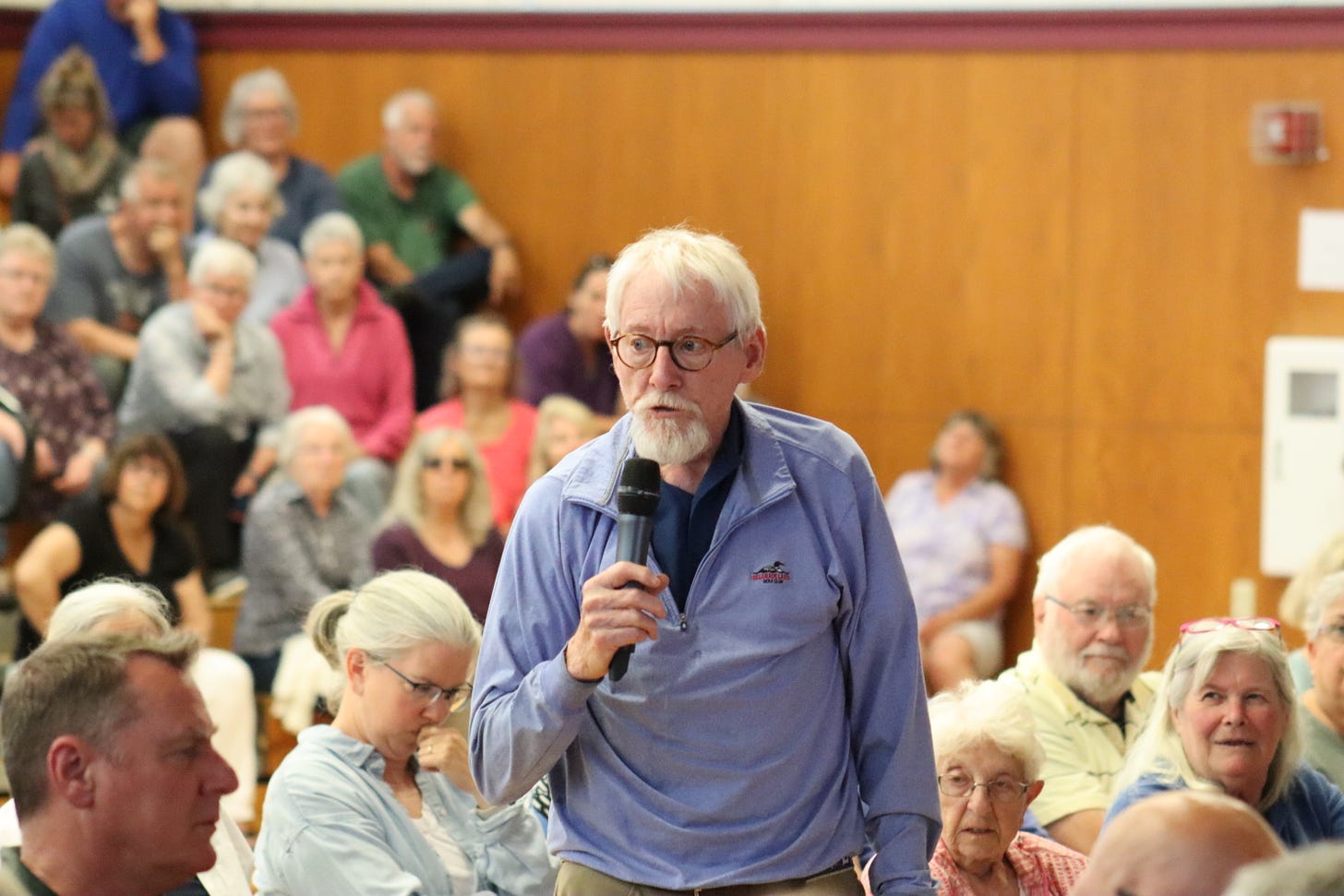
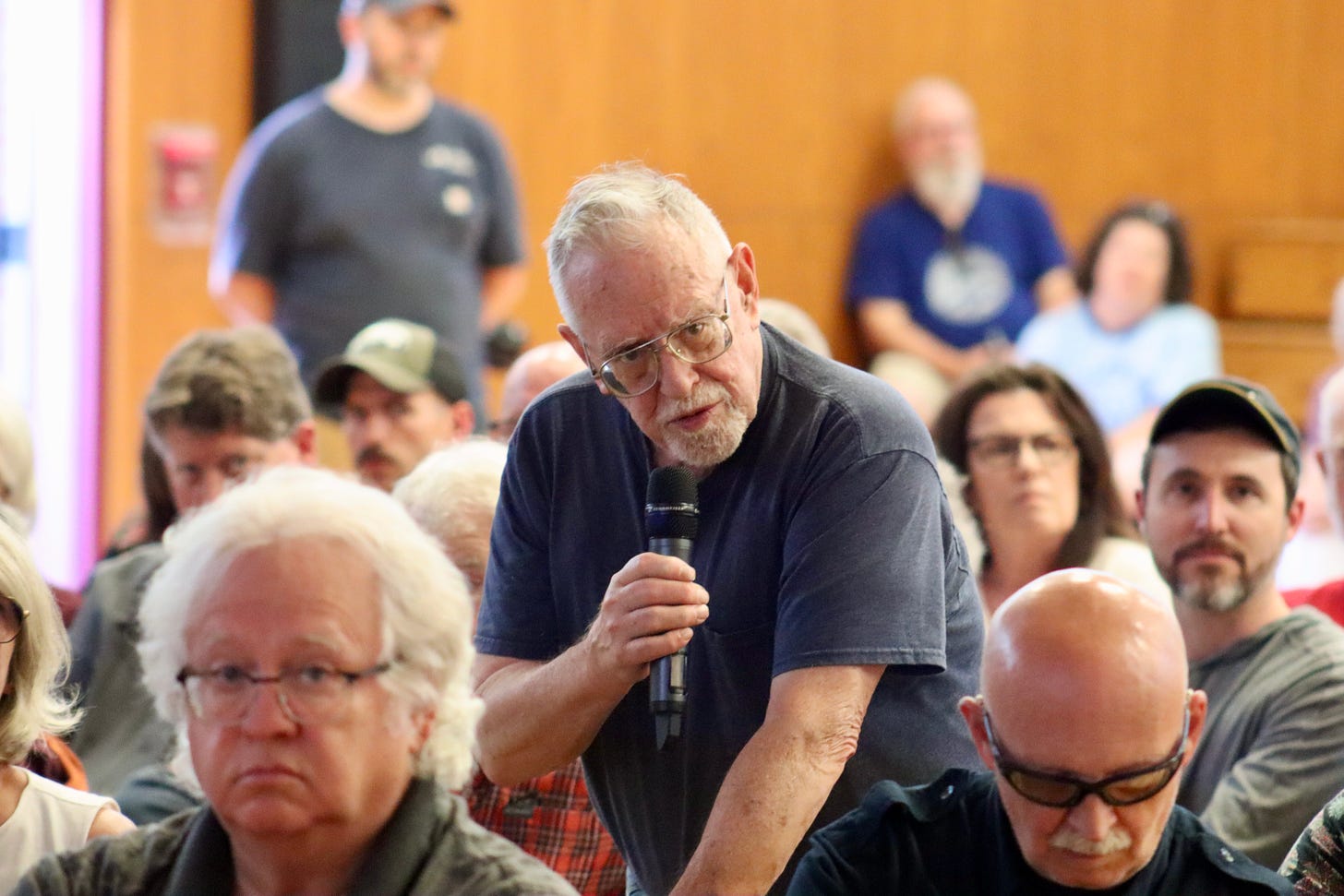
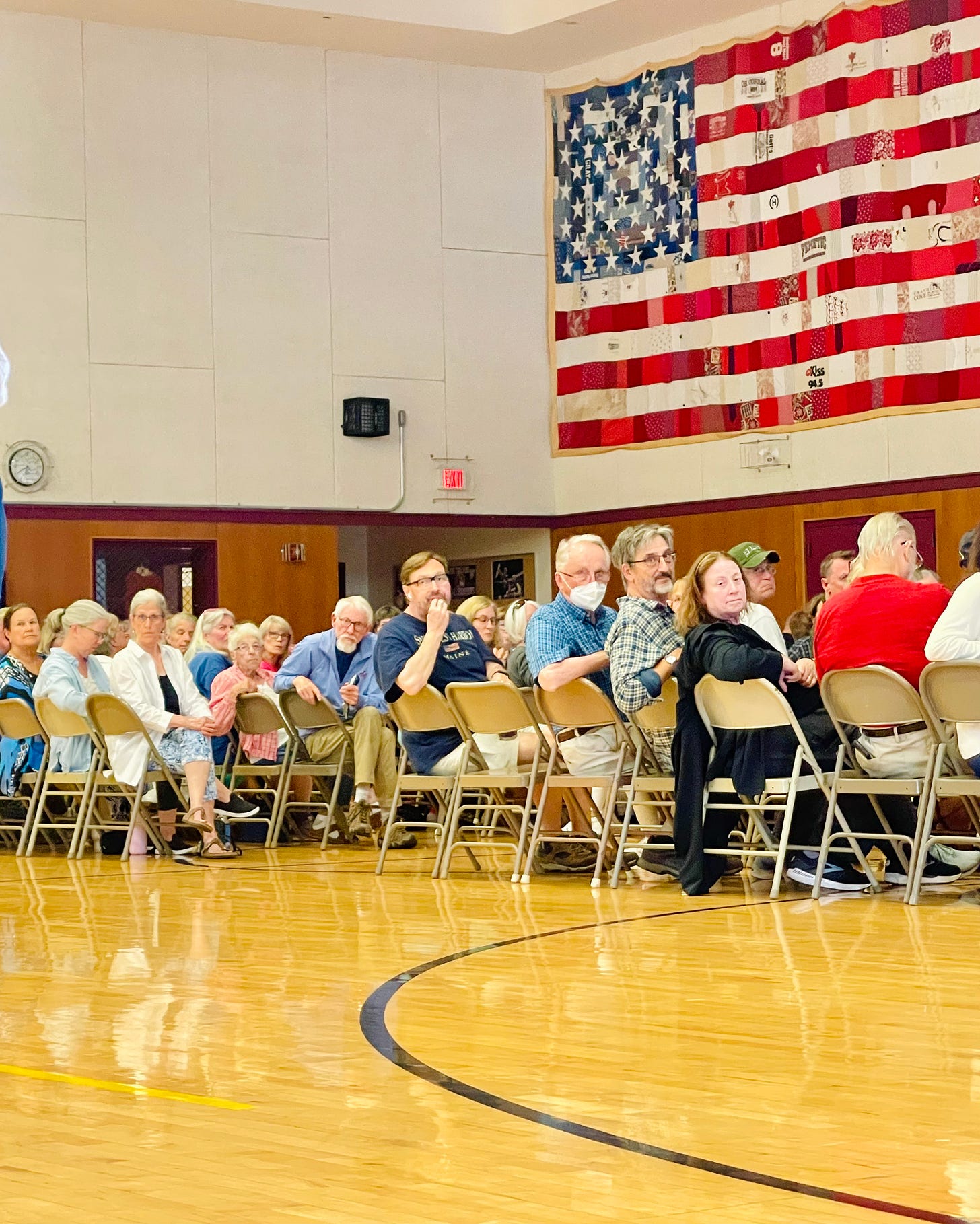
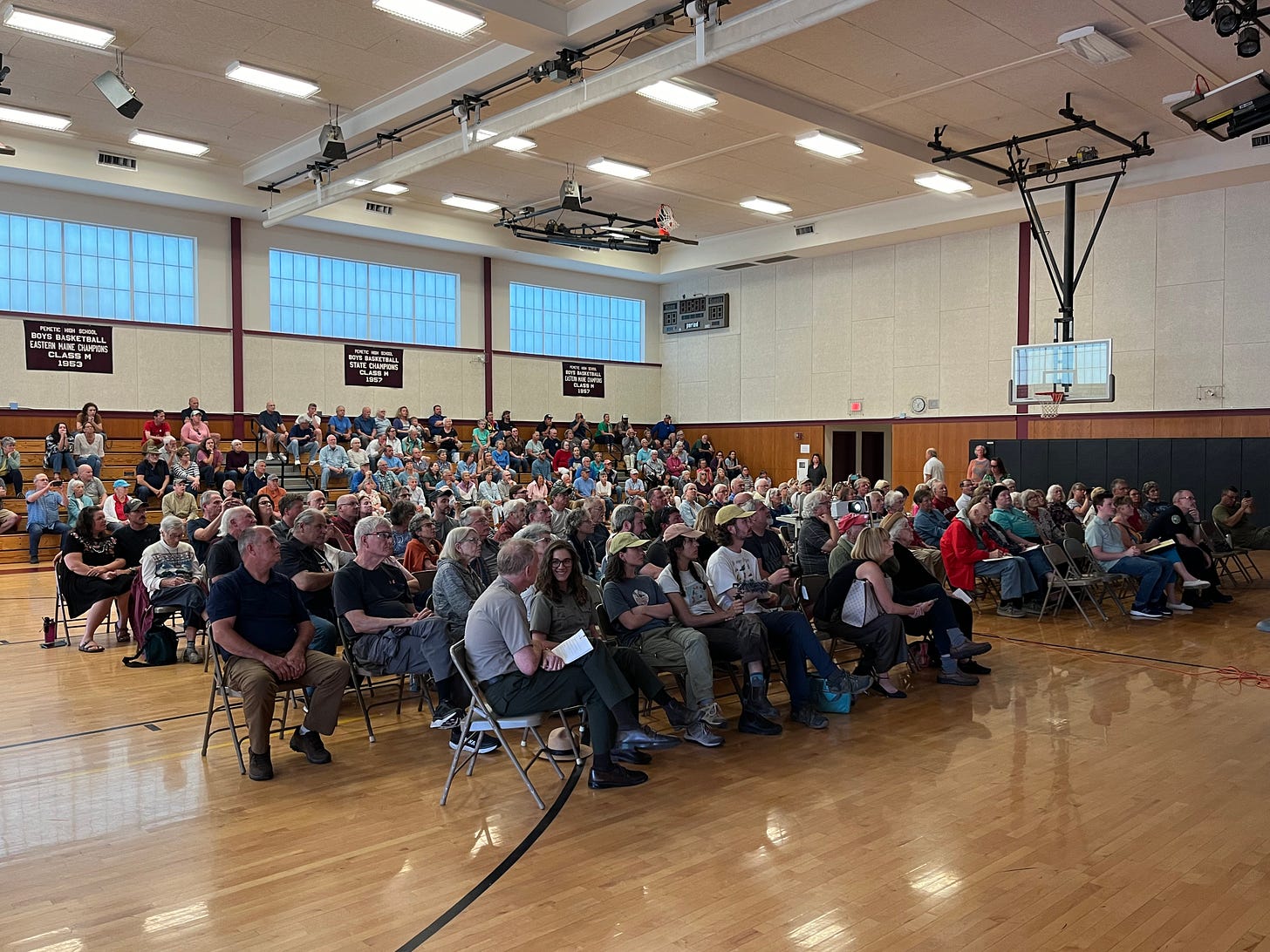
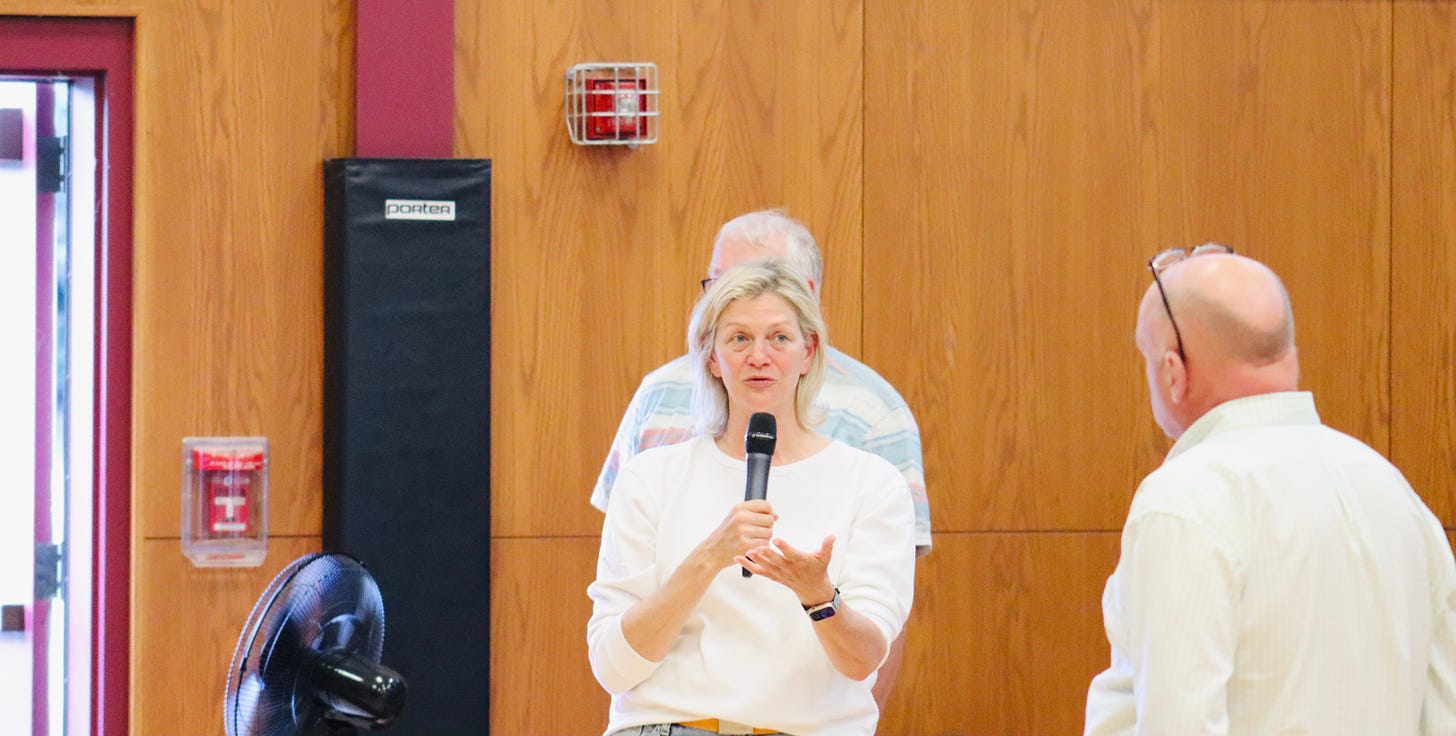



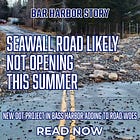
MDOT is a state agency. In my 20+ years of government experience, I know that while state agencies can and do work collaboratively with local governments, they depart from their measured routine only in response to direction from above. The governor has executive power over MDOT operations. The state legislature has power over the agency's budget (and nothing is more important to an agency than its funding).
So appeal to the governor and intervention by the local legislative delegation are the answers here. While threatening litigation might garner headlines, no court is going to tell MDOT how to prioritize its resources and perform its job.